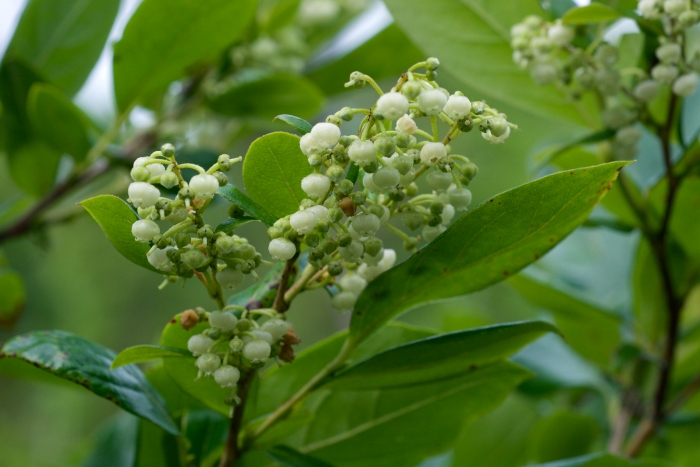Maleberry
(Lyonia ligustrina)
Maleberry (Lyonia ligustrina)
/
/

Eric Hunt
CC BY-SA 4.0
Image By:
Eric Hunt
Recorded By:
Copyright:
CC BY-SA 4.0
Copyright Notice:
Photo by: Eric Hunt | License Type: CC BY-SA 4.0 | License URL: https://creativecommons.org/licenses/by-sa/4.0 | Uploader: Eric in SF | Publisher: Wikimedia Commons | Title: Lyonia_ligustrina_var_foliosiflora.jpg | Notes: {{Information |Description ={{en|1=Detail of flower of plant [[:Category:Lysimachia ciliata|Lysimachia ciliata]] or [[:en:Lysimachia ciliata|Lysimachia ciliata]] from [[:Category:The Botanical Gardens of Charles University|the Botanical Gardens of C...




















































Estimated Native Range
Summary
Lyonia ligustrina, commonly known as Maleberry, is a deciduous shrub native to a variety of habitats including moist to wet woods, bogs, and scrub areas in the Eastern and Southern United States. It typically grows up to 13 feet (4 meters) tall and can spread widely due to its long rhizomes, which may send up new stems up to 13 feet (4 meters) apart. The stems are characterized by longitudinally furrowed bark. The leaves are oval, measuring up to 4.1 inches (10.5 centimeters) long and 2 inches (5 centimeters) wide, and may be deciduous or semi-evergreen depending on the variety. Maleberry produces small, white flowers that are not particularly showy, followed by a small, dry capsule fruit.
Maleberry is valued for its ability to thrive in wet conditions and is often used for naturalizing in moist areas of the landscape. It is also appreciated for its wildlife value, as the dense thickets provide cover and the fruit is a food source for birds. In cultivation, it prefers full sun to part shade, requires high amounts of water, and grows best in soils with medium to slow drainage. While not commonly afflicted by diseases, it can suffer from leaf spot and rust. Maleberry is not known for aggressive roots or significant invasiveness, making it a reliable choice for gardeners seeking a native shrub for wetland plantings.CC BY-SA 4.0
Maleberry is valued for its ability to thrive in wet conditions and is often used for naturalizing in moist areas of the landscape. It is also appreciated for its wildlife value, as the dense thickets provide cover and the fruit is a food source for birds. In cultivation, it prefers full sun to part shade, requires high amounts of water, and grows best in soils with medium to slow drainage. While not commonly afflicted by diseases, it can suffer from leaf spot and rust. Maleberry is not known for aggressive roots or significant invasiveness, making it a reliable choice for gardeners seeking a native shrub for wetland plantings.CC BY-SA 4.0
Plant Description
- Plant Type: Shrub
- Height: 6-12 feet
- Width: 6-12 feet
- Growth Rate: Moderate
- Flower Color: Pink, White
- Flowering Season: Spring
- Leaf Retention: Deciduous
Growth Requirements
- Sun: Full Sun, Part Shade
- Water: High
- Drainage: Medium, Slow
Common Uses
Bee Garden, Bird Garden, Border Plant, Butterfly Garden, Low Maintenance, Water Garden
Natural Habitat
native to a variety of habitats including moist to wet woods, bogs, and scrub areas in the Eastern and Southern United States
Other Names
Common Names: He-Huckleberry, Seedy Buckberry, Seedy-Buckberry, Lyonie Faux-Troène, Lyonie Ligustrine
Scientific Names: , Lyonia ligustrina, Lyonia paniculata, Andromeda ligustrina, Xolisma ligustrina, Lyonia ligustrina f. nanella, Andromeda pilulifera, Arsenococcus ligustrina, Vaccinium ligustrinum, Andromeda racemosa
GBIF Accepted Name: Lyonia ligustrina (L.) DC.